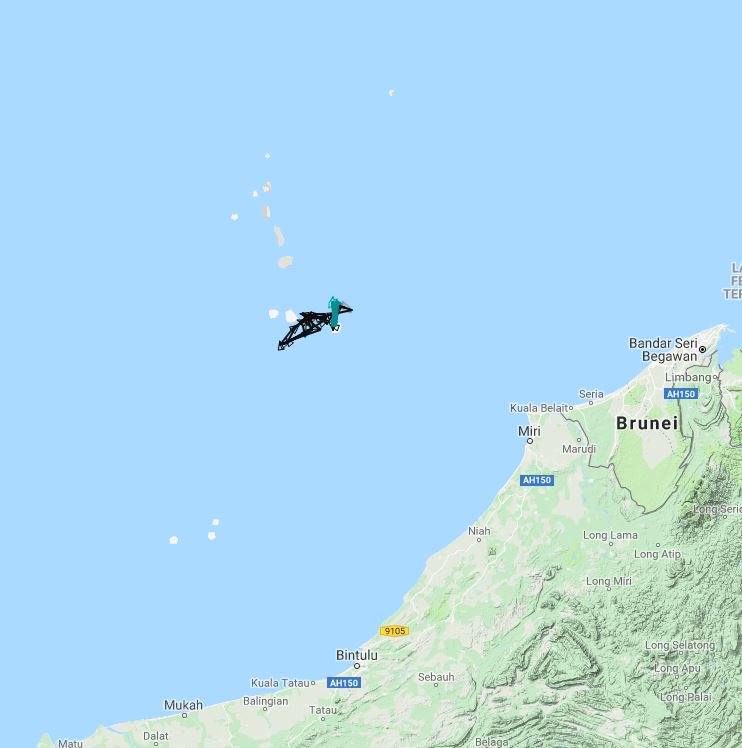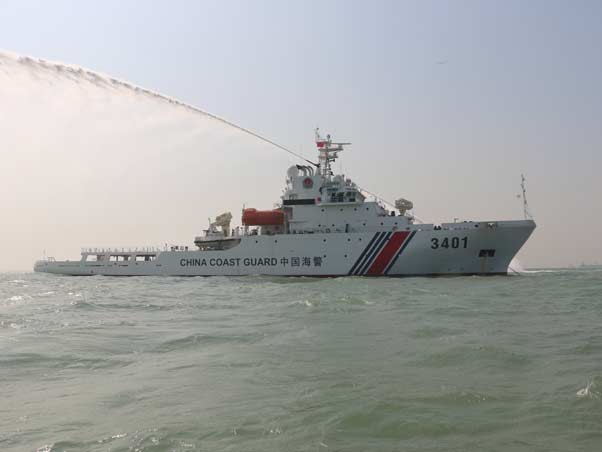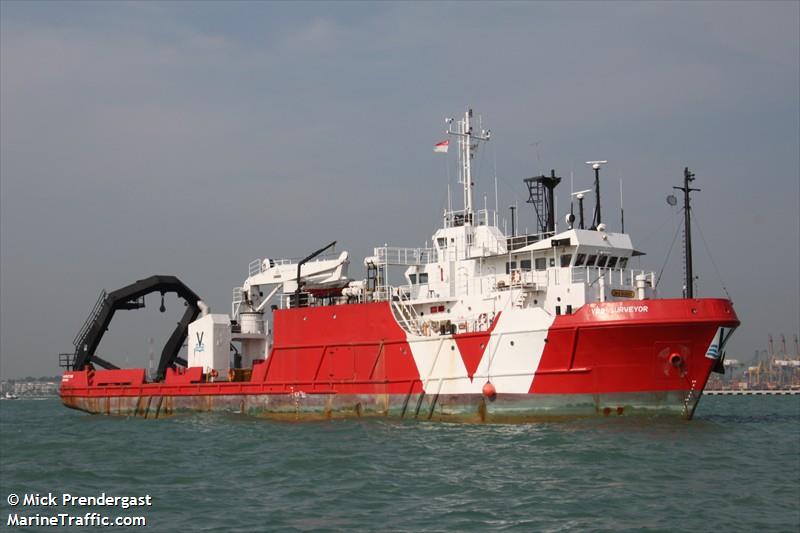The South China Sea: Freedom of Overflight or ‘Unlawful Activities’?
The South China Sea: Freedom of Overflight or ‘Unlawful Activities’?
A critique of recent U.S. military reconnaissance activities in South China Sea from the Chinese perspective.
By Yinan Bao
August 16, 2018
On August 10, CNN reported that a U.S. Navy P-8A Poseidon reconnaissance plane flew over four maritime features in the Spratly Islands in the South China Sea. This incident was actually the third of its kind to take place in a relatively short span of four months this year, following two highly publicized flyover incidents of U.S. B-52 bombers in the Spratly Islands in April and June 2018.
The Nature of the Flyover on August 10
Unlike the two previous flyovers by B-52 bombers, it is not clear whether this time the P-8A flew within 12 nautical miles — the territorial sea — of any of the four features. According to the video recording provided by the CNN, the U.S. pilot replied to his Chinese counterpart that the plane was “conducting lawful military activities beyond the national airspace of any coastal state.” At the first glance, it is thus natural to think that the flyover did take place more than 12 nautical miles from any feature.
However, it is worth mentioning that the U.S. government as well as many eminent U.S. international law scholars, such as Professor James Kraska and Raul Pedrozo, frequently mention the South China Sea Arbitral Award, in which Subi Reef and Mischief Reef were declared by the arbitral tribunal to be “low-tide elevations.” According to Article 13 of the 1982 United Nations Convention on the Law of the Sea (UNCLOS), low-tide elevations generate no territorial sea of their own. Thus, it is possible that the P-8A did fly within 12 nautical miles of these two features. The other two features, namely Fiery Cross Reef and Johnson Reef, were both declared high-tide features by the same tribunal, so they can generate a 12 nautical mile territorial sea.
Even though the Chinese government has yet to specify the territorial sea limits around any feature in the Spratly Islands, it did suggest in its two note verbales to the UN secretary general in 2009 and 2011 that it has sovereignty in “adjacent waters” around features in the South China Sea, a metaphor for the territorial sea. Thus, it is highly unlikely that the P-8A flew within 12 nautical miles of either Fiery Cross Reef or Johnson Reef, if the reply from the U.S. pilot was honest and in good faith. It is worth recalling that in 2015 a U.S. B-52 bomber flew within 2 nautical miles of Cuarteron Reef, another Chinese high-tide feature that possesses a potential territorial sea and above it, territorial airspace. After that incident the United States admitted its mistake and blamed bad weather for the B-52 flying off course.
A more plausible interpretation of the flyover on August 10 is that the P-8A flew in the potential exclusive economic zone (EEZ) around the features of the Spratly Islands. Although the Chinese government has not officially declared any EEZ in the Spratly islands, in the two note verbales mentioned above, it can be suggested that China reserves the right to claim an EEZ based on the provisions of UNCLOS. Notably, the Chinese government also categorically rejected the South China Sea Arbitral Award, in which the tribunal declared that no features in the Spratly Islands can legally generate any EEZ.
Anyway, the U.S. pilot claimed what the U.S. government and scholars always claim: that the reconnaissance plane was exercising rights “guaranteed by international law.” The rights the pilot referred to are the right to carry out military training and the right to carry out military surveillance, all deemed by the United States as included in the “freedom of overflight,” a traditional freedom enjoyed by all states in the high seas, as well as in EEZs, an innovative and sui generis regime established by the UNCLOS.
Chinese and US Divergence in the Interpreting “Freedom of Overflight” in the EEZ
Under Article 58 of UNCLOS, the freedom of overflight enjoyed by all states is expressly stipulated. Meanwhile, the same provision also provides that in exercising their rights, other states “shall have due regard to the rights and duties of the coastal state,” and more important, they “shall comply with the laws and regulations adopted by the coastal state” and other provisions of the UNCLOS and general international law “in so far as they are not incompatible” with the regime of the EEZ. Evidently, it is this lengthy provision that causes much controversy and legal debate between China and the United States.
According to the Chinese interpretation, the exercise of rights in the EEZ is by no means unconditional, but subjected to several “terms and conditions.” First, other states shall exercise their rights in good faith, without any abuse, as required by Article 300 of UNCLOS. Thus, freedom of overflight means that foreign aircraft are granted the right to fly through the EEZ without any unnecessary delay and shall not carry out activities unrelated to the flyover. Accordingly, those flyovers with a definitive military mission will be regarded as an “abuse of rights.”
Second, freedom of overflight can never suggest a right to show off military power and threaten the peace and security of the coastal state. China holds the view that the freedom of overflight can never include activities that may undermine the security interest of the coastal state. Therefore, it is not surprising that a spokesperson of the Chinese Ministry of Foreign Affairs criticized the flyover of two U.S. B-52 bombers in the Spratly Islands in June as a evident threat to the security of China. She likened the move to if “someone armed to teeth comes to your doorstep every now and then, poking around and showing off muscles.” Therefore, such actions provide China with convincing reasons to consolidate defensive installations in its features in the Spratlys.
Third, the exercise of the freedom of overflight shall not violate the domestic laws and regulations of the coastal state. The 2002 Surveying and Mapping Law of the People’s Republic of China requires that surveying by foreign organizations in jurisdictional sea areas of China should receive approval from the Chinese government. Unauthorized surveying may also give rise to criminal responsibility under Article 51 of that law. U.S. military surveillance activities by the reconnaissance plane, if proved to include actual surveying and mapping of various Chinese features, may constitute an overt breach of Chinese domestic law.
By contrast, the United States insists that these military activities are well within the freedom of overflight. That’s what the U.S. pilot replied in the CNN video recording: that he was “operating with due regard for the rights and duties of all states.” Indeed, most U.S. international law scholars endeavor to elaborate that military activities such as surveillance and training are not non-peaceful ipso facto, but instead fall into the category of “other internationally lawful uses of the sea” stipulated in Article 58 of the UNCLOS. Furthermore, U.S. international law scholars also repeatedly advocate that military survey is not maritime scientific research and shall not fall into the jurisdiction of the coastal state in the EEZ.
Here, three legal points call for further comments.
...





